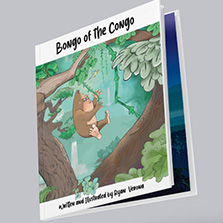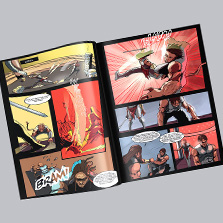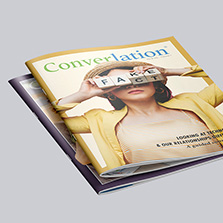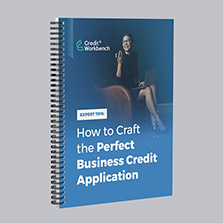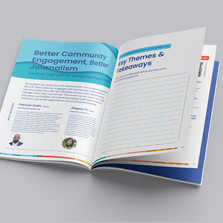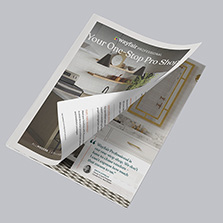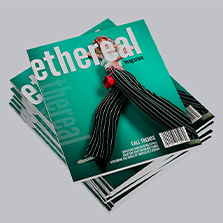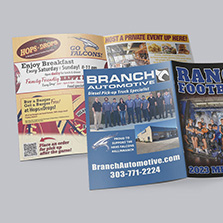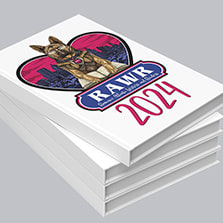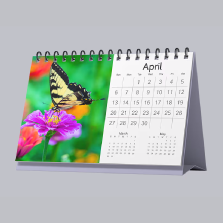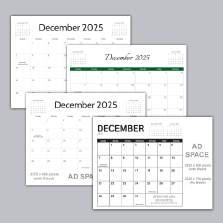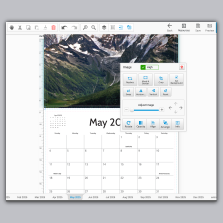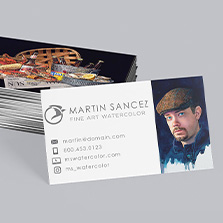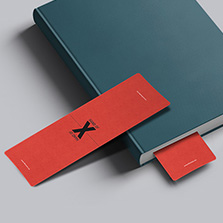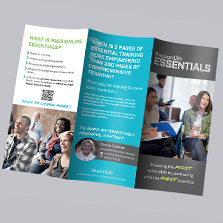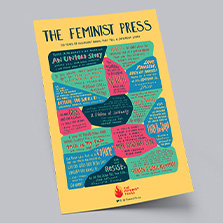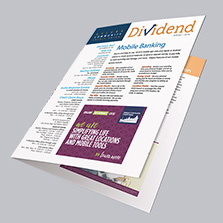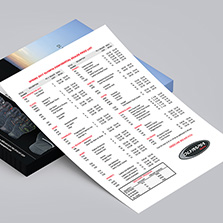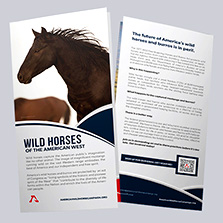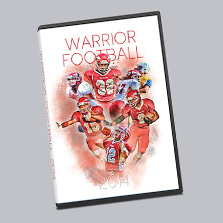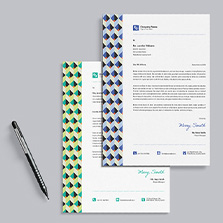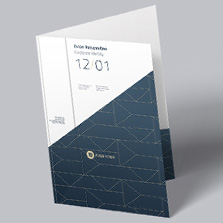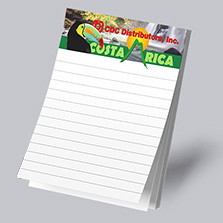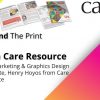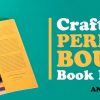
Behind the Print with Care Resource
Welcome to the latest episode of Behind The Print, where we bring you the creative stories of industry leaders shaping the world of professional printing. In this episode of Behind The Print, we’re joined by Graphic Designer and Marketing Associate of Care Resource, Henry Hoyos. With his vast experience in marketing and design, Henry walks us through how he uses print to spread health communication and education to those in need.
Below, you’ll find the transcript of our conversation, edited for clarity to ensure easy reading. If you want the full, authentic experience, make sure to check out the video attached below.
Connor: Welcome back to Behind the Print Podcast, where we feature industry leaders and uncover the creative minds and their businesses within the world of professional printing. Our mission is to provide you with inspiring, actionable resources that elevate your business projects and accelerate your journey to excellence and profit in print. Today’s episode is Health by Design, crafting Messages that matter, and joining me is the graphic designer and marketing associate at Care Resource, Henry Hoyos. Welcome to the podcast.
Henry: Thank you very much. Happy to be here.
Connor: How are you doing today?
Henry: I’m good. How are you?
Connor: I’m good, can’t complain. It’s a Friday.
Henry: Always a good thing.

Connor: If you’re ready, let’s dive right in. Tell me a little about yourself and what you do.
Henry: My name is Henry. I am the graphic designer at Care Resource. We are a community health center and we specialize in all-in-one services. Patients can come to us for primary medical care, pediatrics, dental, and behavioral health, and we like to do everything under one roof. Our focus is the whole patient. We take care of anyone who comes in, from any walk of life, and we help with all their health needs.
Connor: Who are your typical clients?
Henry: Everyone who needs us. As a federally qualified health center, we provide primary medical care and support services to all, regardless of ability to pay. Our mission is to improve the health and overall quality of life of our South Florida communities in need. We stand by that. We help everyone who walks through our doors, and we actively go out into the community to connect people to our services.
Connor: It sounds like you have a close-knit community there.
“As a federally qualified health center, we provide primary medical care and support services to all, regardless of ability to pay. Our mission is to improve the health and overall quality of life of our South Florida communities in need. We stand by that. We help everyone who walks through our doors, and we actively go out into the community to connect people to our services.”
Henry: We do. South Florida has a lot of great people. It is a pleasure to work here and help.
Connor: What problems do you typically help solve?
Henry: My work on the marketing team focuses on health communication and education. There is often a lack of clear information about important health topics that impact our community. People need to know how to access care, where to get free HIV testing, and what support services are available. Our goal is to make sure those messages reach the people who need them most, especially underserved and hard-to-reach populations in South Florida.

Connor: How do you approach solving that?
Henry: We meet people where they are, literally and figuratively. We show up at community events and do person-to-person outreach. We share through social media and use internal and out-of-home advertising on a regular basis. We also have a fleet of mobile medical units that can provide services on the spot throughout South Florida neighborhoods. The goal is to connect in as many ways as possible so people have every chance to see, hear, and engage with information they need.
Connor: Do you do house calls?
“We meet people where they are, literally and figuratively. We show up at community events and do person-to-person outreach. We share through social media and use internal and out-of-home advertising on a regular basis. We also have a fleet of mobile medical units that can provide services on the spot throughout South Florida neighborhoods. The goal is to connect in as many ways as possible so people have every chance to see, hear, and engage with information they need.”
Henry: We have a remote patient monitoring system. Our team calls patients regularly, follows up, checks on blood pressure, and confirms they are taking medications. We answer questions and make sure patients feel like they have support at every level.
Connor: That circles back to the close-knit community idea.
Henry: Exactly, one hundred percent.
Connor: How does Care Resource stand out from other health centers and nonprofits?

Henry: We are a true all-in-one health center. We offer primary medical care, dental, pediatrics, and an in-house pharmacy. We provide behavioral health, case management, and more, all under one roof. That creates a complete continuum of care. We keep expanding. We are Joint Commission accredited, which is important, and we have been recognized among the top ten percent of health centers nationwide. We are also in the top one percent for HIV prevention and care. That is close to our heart. We started in the 1980s during the HIV epidemic, and then we expanded to care for the entire patient. Honestly, what makes Care Resource special is our team. They are warm, talented, and fiercely compassionate across every department. We get amazing feedback from patients who feel seen and heard on top of being cared for. That inspires us to work harder.
Connor: Fiercely compassionate. That is a great phrase.
Henry: It is inspiring to see. I work in graphic design and marketing, but the heroes are on the front lines. The nurses, doctors, providers, and behavioral health therapists are incredible. I feel lucky to highlight what they do and help get the message out.
Connor: Would you talk about some of your print projects? I have a few examples here.
Henry: Absolutely. Print is a huge part of what we do and helps us connect with the community. You will see banners at events, bus shelter ads around the city, and billboards in high-traffic areas. We hand out flyers and brochures throughout the community. We also share our message through magazines, newspapers, and press coverage. Because we serve people from many backgrounds, we produce materials in multiple languages so everyone can access information and resources. You have been fantastic in helping us get that message out. The quality is there. We send projects to you, and we know they will arrive on time and look right.
Connor: We appreciate you printing with us and saying that. I noticed you print pamphlets and booklets in English and Spanish, and also in Creole. Is that widely spoken in your area?
“Print is a huge part of what we do and helps us connect with the community. You will see banners at events, bus shelter ads around the city, and billboards in high-traffic areas. We hand out flyers and brochures throughout the community. We also share our message through magazines, newspapers, and press coverage. Because we serve people from many backgrounds, we produce materials in multiple languages so everyone can access information and resources.”
Henry: Yes, especially in Midtown Miami and the Fort Lauderdale and Broward area. There are many Haitian Creole speakers, and we absolutely serve them. Everyone should have access to the health services and information they need. People think of Spanish in South Florida, which is true, but our Haitian community is large too. We serve everyone.
Connor: Can you share major milestones that have defined you or Care Resource?
Henry: Care Resource has grown a lot over the years. We began in the 1980s, founded in direct response to the HIV and AIDS epidemic in South Florida. Through the eighties and nineties we led in clinical research for HIV care and treatment. In 2009 we became a federally qualified health center and expanded to cover all aspects of healthcare. In 2013 we earned Joint Commission accreditation. In 2022, after COVID, we launched an in-house pharmacy, which has been a big boost for patients. Today we have multiple health centers across Miami-Dade and Broward counties. Our newest site in Little Havana opened this year. It has been a long road, and we continue to grow.

Connor: That is a lot of progress. What challenges have you faced to get where you are today?
Henry: One of the biggest challenges health centers face right now is uncertainty around the 340B pharmacy program. The program is a lifeline for nonprofits like ours because it provides unrestricted funds that can be used to help the people who need it most. A lot of that money is reinvested into the health center to directly help patients. When funding is stable, we have been able to provide more than 9 million dollars in free healthcare services in a single year. To keep doing that, we have to protect programs like 340B, maintain strong funding sources, and keep securing new ones. That is how we can continue offering the level of care our community counts on.
Connor: Would you like to add other challenges or milestones?
Henry: Our main challenge is steady, secure resources and funding. Many people donate directly. We also run sponsored fundraisers with community leaders. We have to make sure we have resources to deliver resources. For milestones ahead, we are planning an exclusively behavioral health center in the Broward area. We have plans to open more pharmacy locations. A lot of it is in progress, but our focus is keeping our foundation strong so we can expand and offer better solutions and more care to everyone who needs it. Thankfully we have a great team that works hard to find opportunities and grow.
Connor: What advice would you give to someone creating an informational booklet that stands out?
Henry: Design is subjective, but the landscape has improved with new tools like Canva. With more people creating, there is also a lot of noise. To stand out, I look for simplicity. What is the simplest way to say what you need to say? You can always add complexity later, but if you can get your core message across in its simplest form, that is powerful. One word, one image, a specific bold color. Say it in as few words as possible and make someone stop and listen. The simpler the message, the more it stays with people. It cuts through constant visual stimuli. Start there. Then build.
Connor: There is also the technical or medical language, which can be hard for the average person.
“With more people creating, there is also a lot of noise. To stand out, I look for simplicity. What is the simplest way to say what you need to say? You can always add complexity later, but if you can get your core message across in its simplest form, that is powerful. One word, one image, a specific bold color. Say it in as few words as possible and make someone stop and listen. The simpler the message, the more it stays with people. It cuts through constant visual stimuli. Start there. Then build.”
Henry: That can be a challenge. We still have to meet legal and procedural requirements, especially if a program is government related. But if we focus on the core service and the core message, the heavy jargon is often unnecessary. What aspect of this person’s life and health are we going to help? That is the universal language. Once we land that message, we can translate into any language we need. We do this in three languages regularly, and it all goes back to the person. Start with what helps them in their life.
Connor: A lighter question. If you had a day completely free, how would you spend it?
Henry: It depends on the mood. Either I would relax and do nothing, or I would make something new. I love to draw and make things with my hands. If I was rested and energized, I might spend the whole day building a spaceship in the garage, make a mess, and be happy. If it was a rough week and I needed rest, I would order pizza and ice cream, draw the shades, and watch movies and mystery stories while doing nothing. Or travel the world and discover history and cultures through food. It depends on the day.
Connor: That sounds like a good day. Sometimes you just need to settle in, put on Netflix, and chill.

Henry: If it was a good week and I was not overworked, my mind goes to Spaceship Earth at Disney World. People think of it as a ride where you rest, but I love it. It talks about our history and how technology evolves, then asks about the kind of future you want to live in. There is a question about choosing a lifestyle and it says leisure activity. I can almost hear Walt say it. Leisure activity speaks to my soul. If I had the time and resources, I would make things and travel the world, discovering food and culture, and keep making new things.
Connor: Last question. What is the best way for listeners to get in touch, collaborate, or donate?
Henry: Visit our website at careresource.org, or find us on Facebook and Instagram. You can learn who we are and what we do. If you are interested in volunteering, you will find information on our site. We are on all the major platforms. If you have questions or want to learn more, reach out.
Connor: Do you have any questions for me?
Henry: I do. You are a large commercial print business. How many countries are you in?
Connor: To my knowledge, we have done some international orders, but we operate from one facility based in Montana. We have shipped internationally, but it is really the one facility.
Henry: Nice. We are in South Florida, and every time we order from you, the projects arrive quickly. They are well packaged and organized. We have health centers throughout South Florida and Broward counties, and you make it easy. The answers are quick, and it always looks good. I am impressed and grateful to be partnered with you. Thank you for the great work.
Connor: Thank you for joining us and for printing with us. It is a pleasure.
Henry: Same here.
Connor: That is a wrap on another episode of Behind the Print. Thank you for joining us as we explore the artistry and innovation of the printing world. Remember, using tools like print can help your brand stand out from the crowd. If you enjoyed today’s episode, get your sample pack at printingcenterusa.com and share the podcast with a fellow business enthusiast. Until next time, keep those creative sparks flying, and remember, there is always more to discover Behind the Print.




